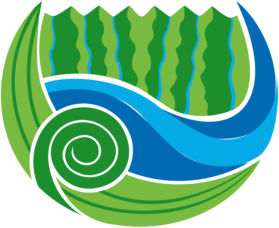
HE ALIʻI NO KA ʻĀINA,
HE KAUWĀ WALE KE KANAKA.“The land is chief, man is but a servant.” ʻŌlelo Noʻeau #531, Pukui
Cultural Connections:
Forests and Watersheds in Hawaiian Culture
Ancient Hawaiians revered all of nature, regarding themselves as part of it rather than separate from it, and the Hawaiian culture and worldview was shaped by their surroundings. Hawaiians gathered many resources from these forests, following the traditional protocol of asking permission to enter through oli (chant), taking only what was needed, and offering thanks.
Wood was harvested from a variety of native trees to frame shelters and to create objects such as containers, tools, instruments, weapons, fishing floats, surfboards, and voyaging canoes. Feathers from endemic forest birds were collected to be woven into garments for the aliʻi (chiefs). Plants considered sacred to hula were gathered to make lei and costumes for the dancers, while others known for their healing properties were gathered for use in laʻau lapaʻau, or traditional Hawaiian medicine.
In the traditional ahupuaʻa land management system, rain flowed down from the mountains in waterfalls and filled streams that meandered through the wao kanaka (realm of man) providing fresh water for loʻi kalo (taro fields) and other vital agricultural fields, as well as aquaculture and loko iʻa (fishponds) in the coastal areas.
The most upland part of the forest, the wao akua, or realm of the gods, was sacred. Trees growing in this area were considered a physical manifestation of the spirit realm. Only certain members of the Hawaiian community could enter the sacred part of this forest upon a strict protocol.
Intact native forest communities and native Hawaiian cultural practices are inextricable from one another. The native Hawaiian community’s desire to maintain their connection to the forest is evident in the movement to legally preserve access and traditional gathering rights in modern times. In order for native Hawaiians to preserve the authenticity of their cultural practices and perpetuate their heritage, the diverse and unique species that make up Hawaiian forest ecosystems and these fragile forest habitats must be protected and preserved.
Additional Resources
Oʻahu ʻĀina Inventory
Nohopapa Hawaiʻi collaborated with Kamehameha Schools (KS) on this innovative Oʻahu ‘Āina Inventory that incorporates a synthesis of historical research, ethnographic information, wahi kūpuna data, and the current stewardship efforts taking place in each moku of Oʻahu to create a richer understanding of their historical and contemporary cultural landscape.Ava Konohiki
Find historical maps of the moku, ahupuaʻa, and wahi of Oʻahu. Some maps for other islands are also available.Bishop Museum Hawaiian Ethnobotany Online Database
A great resource for those looking to expand their knowledge of the importance of native species to Hawaiian culture.Ulukau Hawaiian Electronic Library
A catalogue of Hawaiian dictionaries, literature, newspapers, and more.
Recommended Books
Join Our Mailing List & Stay Connected
Sign up to be the first to receive our newsletter, volunteer opportunities, job openings, and updates.

